LEGO Monorail: Bring it Back or Build Your Own?
Today’s BrickNerd article features a guest post about LEGO monorail by Joe Meno of BrickJournal Magazine.
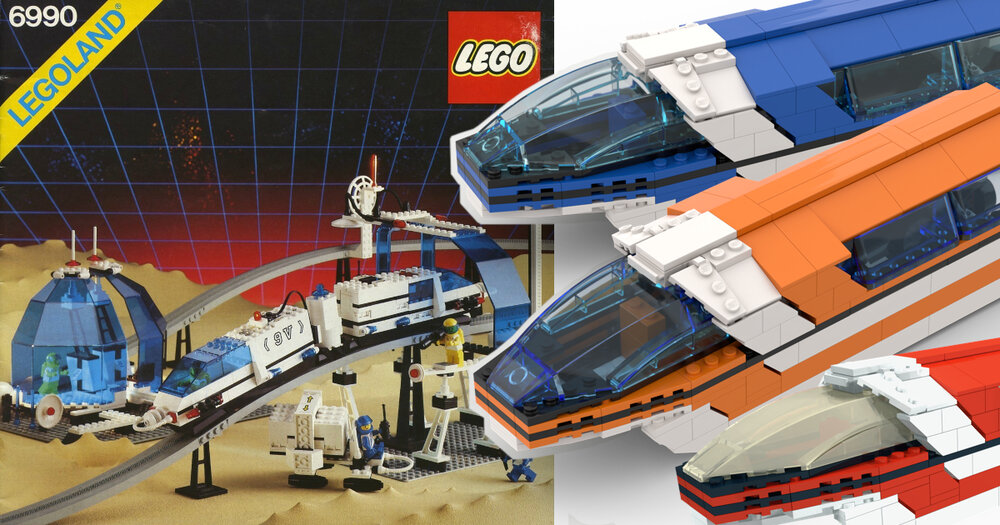
Bring Back Monorail!
One of the perennial requests that come from long-term LEGO fans is to bring back the monorail. Year in and year out, the request is made at conventions to LEGO representatives, and year in and year out, the company’s reply is the same: “We are not currently planning a monorail.” It has almost become a badge of honor for a visiting designer to get the question—to the point that asking the questions has become more of a cultural phenomenon rather than a sincere request.
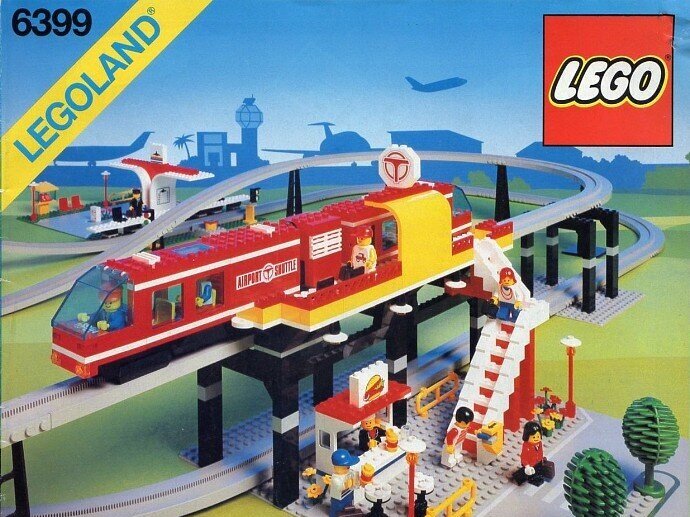
IMage via Brickset
Of course, there are a number of reasons why monorail from the 80s and 90s is likely never going to make a comeback. The molds and the motor aren’t available anymore because they were produced by a contractor that no longer exists. There would be massive up-front expenses in recreating all of those things. Plus it can be argued that with the new LEGO rollercoaster track system, the need for a monorail has lessened.
But I am not going to argue any of those points, because why do we need LEGO’s monorail when we can build our own? I have a monorail (actually two). And with what is currently available in terms of elements and electronics, we can make monorails that are better than the classic version that LEGO made (like this one of mine).
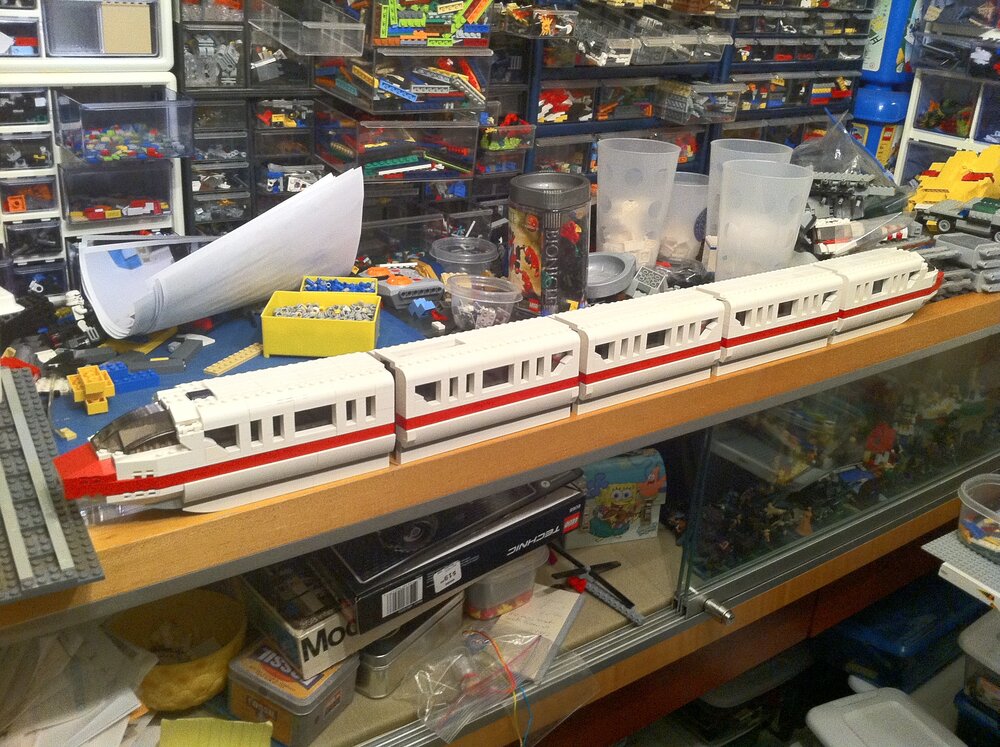
Mono a Mano?
For me, this desire to build monorails first showed up more than 45 years ago when I was in Germany. I’m an army brat, and that’s where I got my first LEGO sets. I built the sets and then built my first MOCs. (They looked like the MOCs made by a seven-year-old—they were clunky and had a mash-up of all the colored bricks.) But one creation I made was a monorail.
Because I didn’t know about streamlining at the time, my creation was more or less a long cab on top of a 1-stud wide track. To make the track smooth, I built the bricks upside down, and the train straddled the track. Because I was focused on structure, I didn’t consider color, so the creation looked pretty bad. But I did figure out how to make it actually turn—use a turntable to rotate the track!
The model didn’t last very long as its parts were sacrificed for the next MOC… and the next… and the next. I entered a Dark Age in junior high and returned to the hobby in 1999, just in time to see the fan community start online. I also became a Disney fan which eventually pointed me back to building a—wait for it—monorail!
I started building it in 2003, and this time I had online resources for reference (monorails.org) and for parts (BrickLink). I was ready to make a cool MOC, but I didn't get very far, as my building skills with motors didn’t exist. So I only got as far as this:
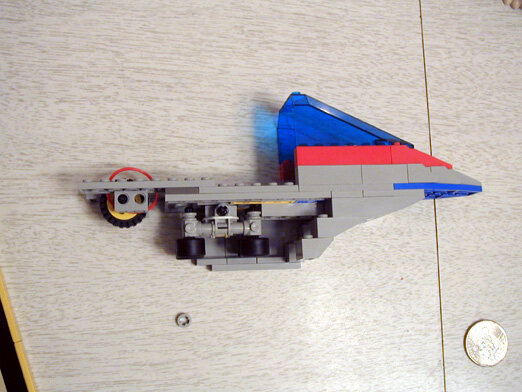
The underside was based on what I researched using guide wheels on the sides to keep the train balanced.
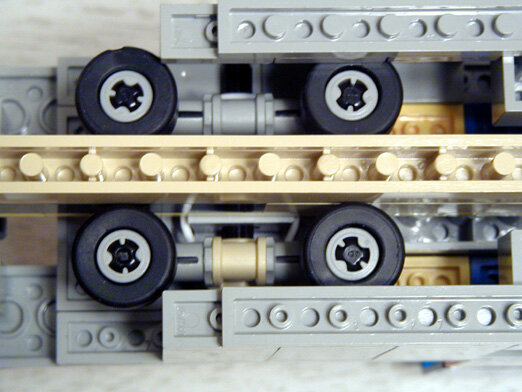
I didn’t know how to motorize it at all, so obviously, my first attempt failed. I went on to build other things, but kept the idea in the back of my mind just in case someone else figured things out. I didn’t have to wait long. In 2004, I found a builder who had come up with a working monorail. His name? Masao Hidaka.
Master of the Monorail
Masao Hidaka is a Japanese AFOL and an incredibly prolific builder. In 2003, he started building a custom monorail system. Initially, he built a monorail and track, then added switches, then crossovers, and then even flexible track to make curves. On his YouTube channel, you can see the monorails in operation using his system, including this video:
At first glance, his system seems complex. However, after studying his videos and sending some questions via e-mail, it turns out that a monorail isn’t that hard of a build. More interesting is that the motor and its wheels are on a frame over which the exterior is attached. In other words, the monorail could be easily reskinned. You can see the construction of one in this video:
The key takeaway is that since the frame is open, the train can be adapted to different electrical systems by replacing the motors and batteries. SO unlike LEGO’s official monorail, this brick-built system can be upgraded for whatever electrical system LEGO is using. Power Functions, Powered Up, and WeDo have all been used to run LEGO trains, and this system can handle each technical innovations
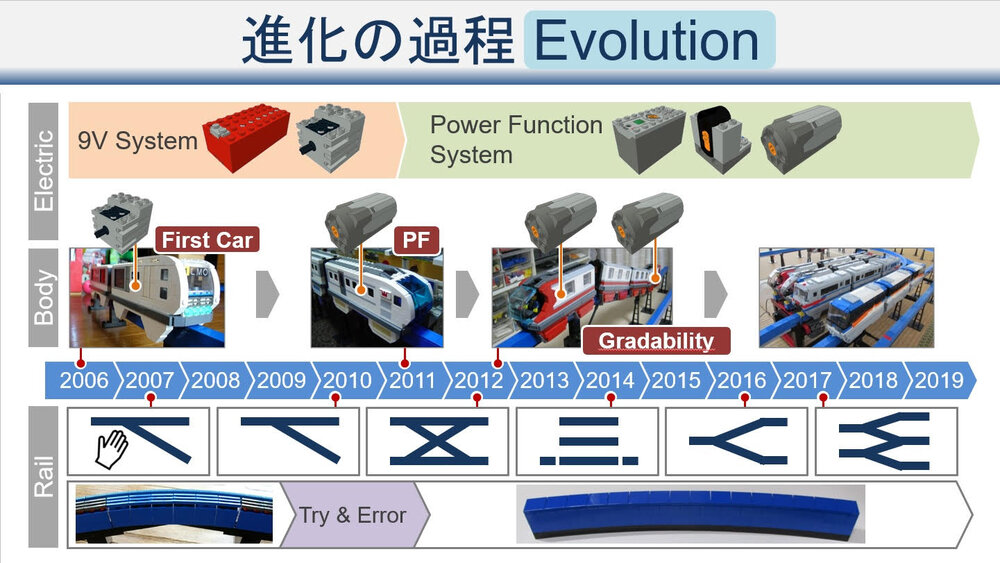
Image via Masao Hidaka
With Powered Up, trains can be programmed to run and have a light sensor pointing to the track so they can stop and start automatically depending on the brick-built colors of the track. So really, there is no limit to the designs of a custom, brick-built monorail. Check out these renders for more detail and varied designs.
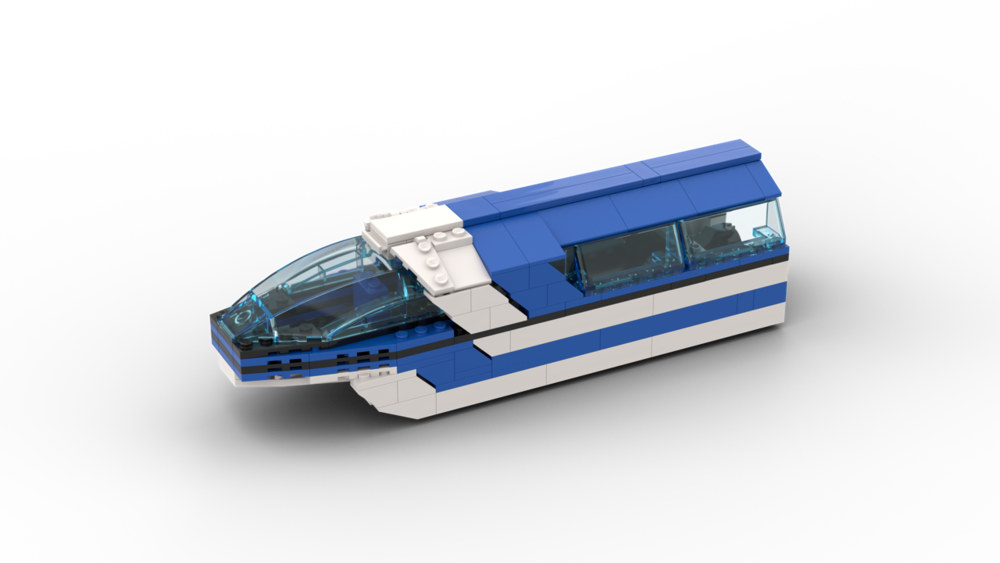
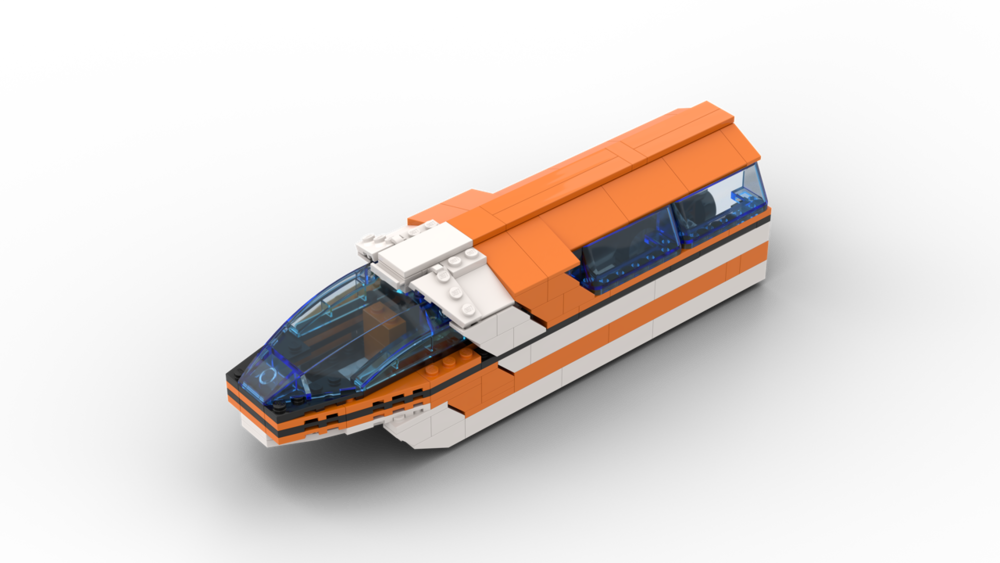
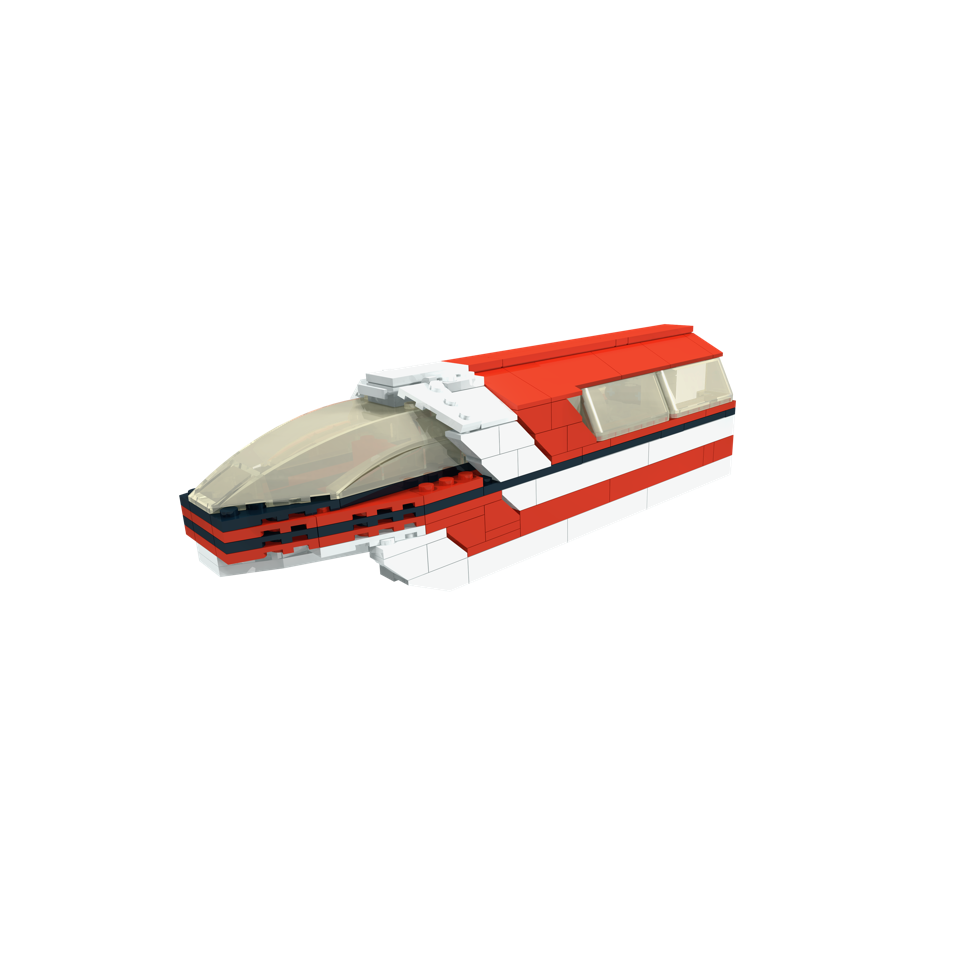
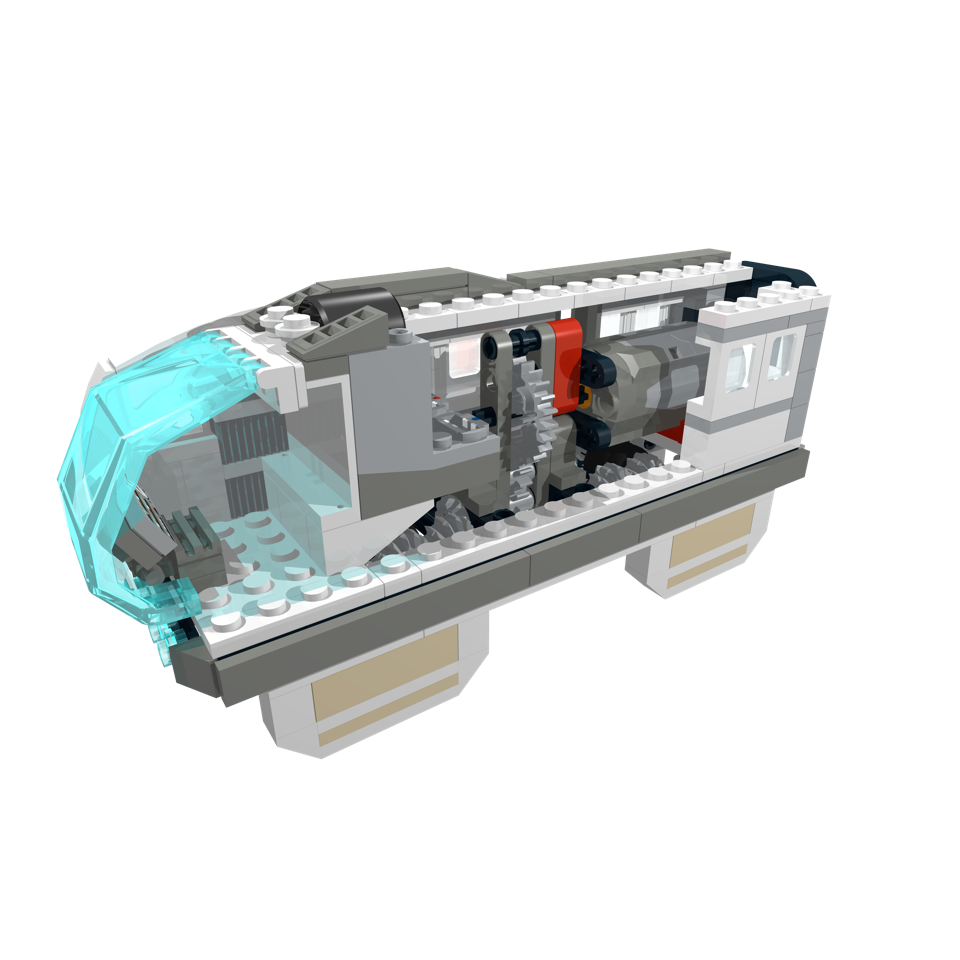
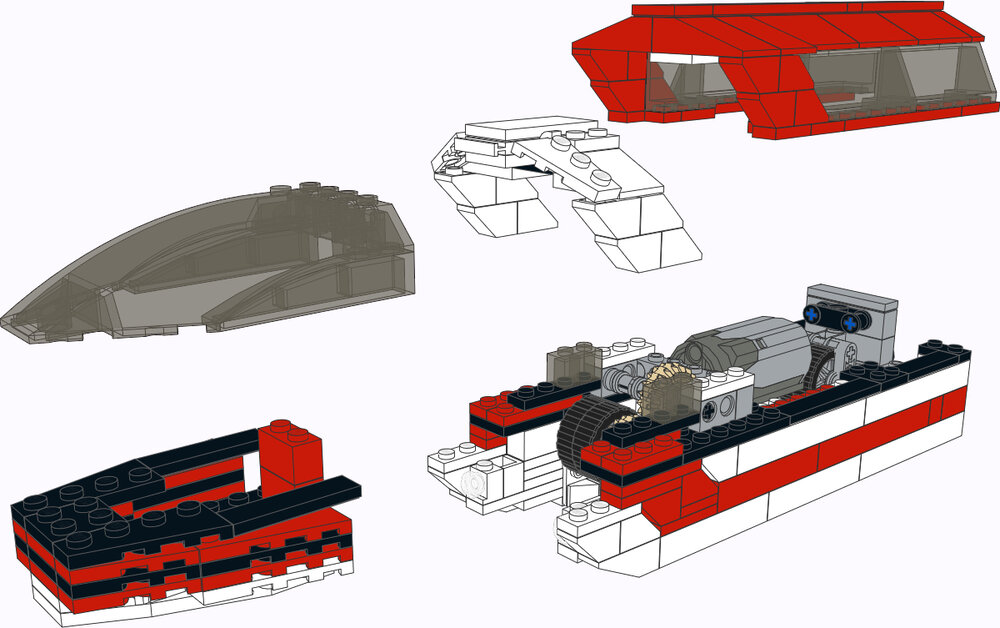
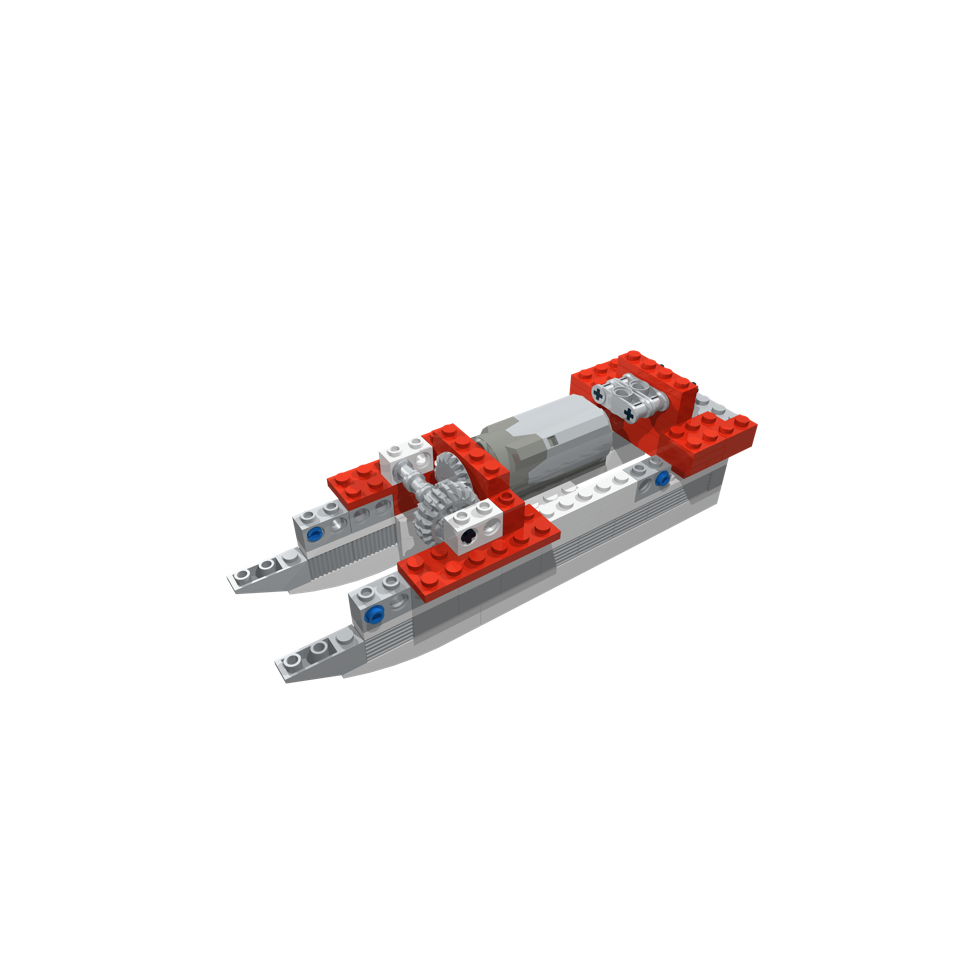
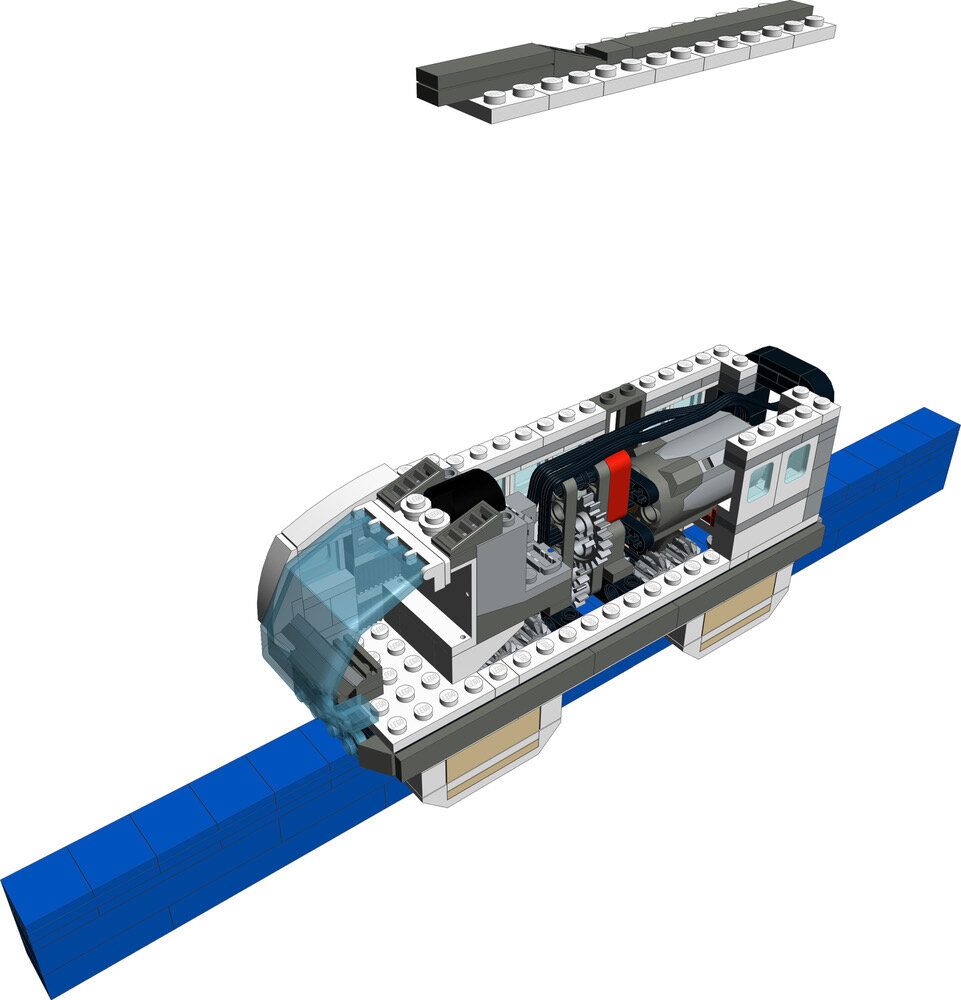
Masao’s track system is based on 2-stud-wide monorail track, which can be built using 2-wide brick, supported by two layers of plates then tiles to make the top smooth. Here are breakdowns of each that he has provided.
View fullsize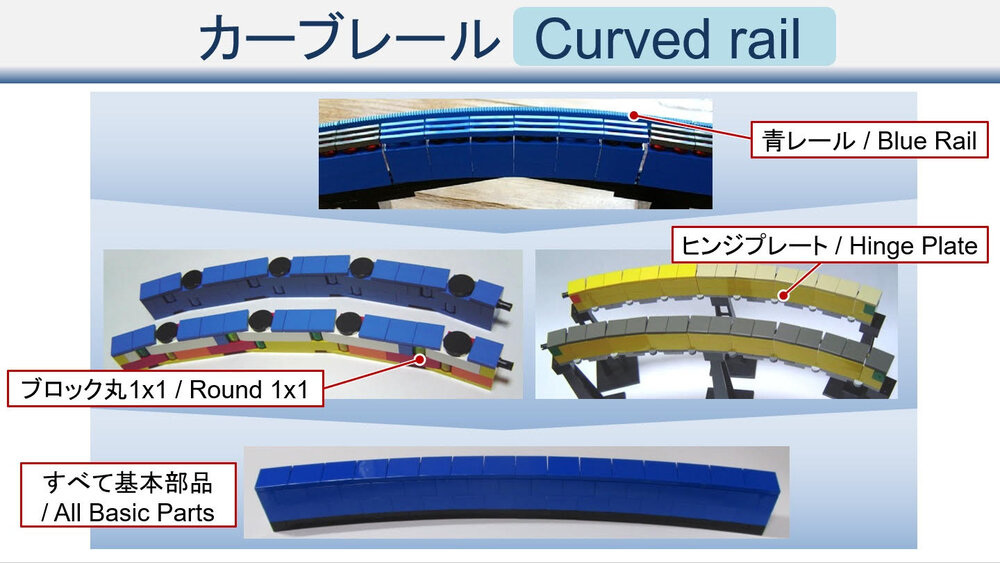
View fullsize

You can see the assembly video for both straight track and curved track here:
His curved track is very clever, using the ‘bending’ of bricks to make adjustable curves. The smaller the parts, the tighter the curve.
Talking Track
I spoke with Masao about LEGO monorail and learned a few great tips!
Joe: What inspired you to build a monorail?
Masao: As a child, I longed for the monorail as I lived in the countryside. I never had a ride on a monorail or saw one. Looking at picture books and magazines, I longed for a futuristic vehicle. This was the beginning of my original brick monorail.
Joe: How long did it take to design the track and figure out curves?
Masao: I made the first curved rail using the blue train rail around 2006. The current curved rail, using only basic elements, in 2011.
Joe: What are the advantages and disadvantages of building your own monorail?
Masao: First off for the disadvantages, we have to deal with regular electronics system changes, such as Power Function motors to Powered Up—and the resulting changes in the shape of the motor. Plus we have to think about all aspects of the track system ourselves rather than have a set system from LEGO.
In terms of advantages, rails are built with basic parts, so the layout is almost free and can always be updated and will never go out of style. You’ll have no issues with discontinuing parts and elements.
Rolling Stock
So if LEGO wasn’t going to bring back monorail, I wasn’t going to let that stop me. From here, I created two versions of the Disney monorails using Masao’s system—and let’s just say I had a bit more success than I did my first time around.
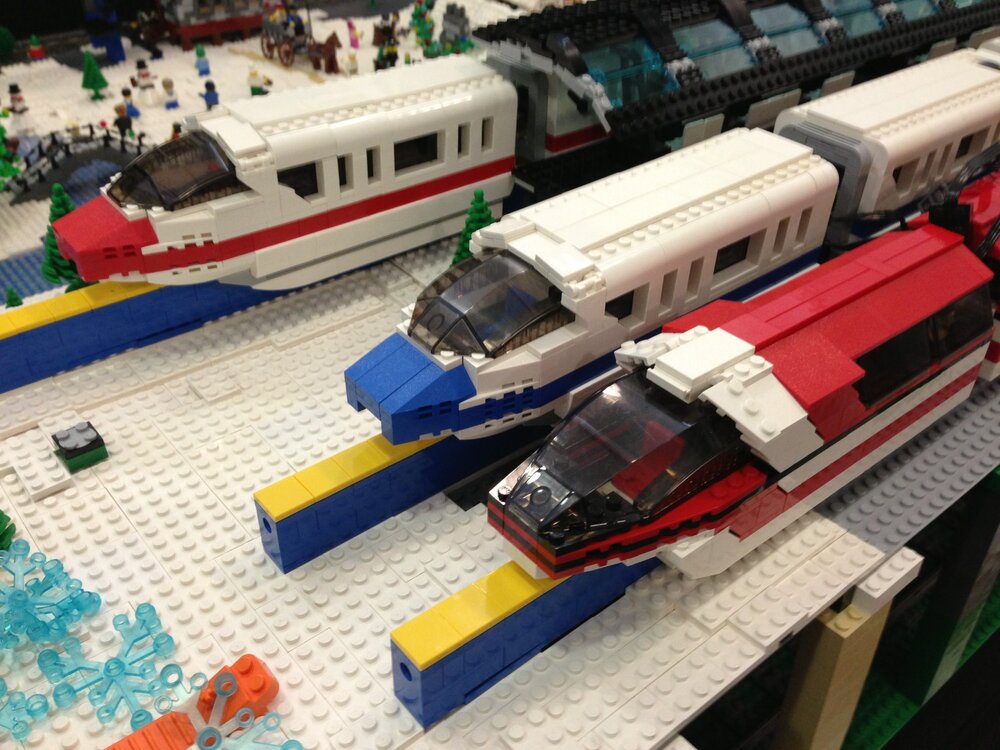
The Mark VI Monorails Red and Blue are in the rear, and they are used at Walt Disney World. The Mark VII Monorail Red (my last monorail built) is in front and is used at Disneyland. All are powered with Power Functions motors and rechargeable batteries, but I plan to move to Powered Up motors and hubs. Masao’s monorails look a lot like the ones at Tokyo Disneyland, although he models his after what are used for commuters in Japan.
You can see the Mark VI Monorail Red run in this video:
In summary, you can see that Masao’s setup has matured to become a custom monorail system that is adaptable, cost-effective, and scalable using off-the-shelf parts for all components. The length of the track is only limited by the number of common bricks, plates and tiles that you have on hand.
So now instead of asking LEGO to bring back monorail, why not make a monorail that is truly yours?
Best of BrickNerd: Weekend Highlight — Article originally published July 6, 2021.
Should LEGO bring back monorail? What are your thoughts on monorails? Are you more comfortable with two rails? Let us know in the comments below!
Do you want to help BrickNerd continue publishing articles like this one? Become a top patron like Charlie Stephens, Marc & Liz Puleo, Paige Mueller, Rob Klingberg from Brickstuff, John & Joshua Hanlon from Beyond the Brick, Megan Lum, Andy Price, Lukas Kurth from StoneWars, Wayne Tyler, Monica Innis, Dan Church, and Roxanne Baxter to show your support, get early access, exclusive swag and more.

